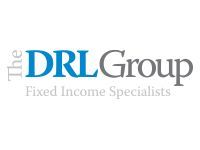
Municipal debt securities have always been attractive investment vehicles for those looking to benefit from tax-exemption while still generating good returns. In addition to their federal and, often, state tax-free statuses, these securities are typically backed by strong revenue streams and reserves, creating higher credit qualities and making them even more desirable than their taxable counterparts.
Even though corporate debt may produce higher yields, the overall tax benefit with municipal debt is often enough to outweigh the higher yields offered on taxable debt, and this tax benefit increases as an investor’s tax bracket increases. However, there are certain situations with tax-free securities that can create a tax liability and cut into the overall return of the security. While coupon income from municipal debt can be tax-free, price appreciation on a bond purchased at a discount in the secondary market can still be taxable.
In this article, we will take a closer look at the De Minimis Tax Rule to try to understand its implication on municipal debt transactions for investors.
Click here to learn all you need to know about the taxation of municipal bonds.
Prevailing Interest Rates and Fixed Income Security Pricing
Before we tackle the De Minimis Tax Rule, it’s imperative to understand the bond transaction, pricing and how a bond can be sold for more (premium) or less (discount) than its face value.
When a bond is first issued, it’s sold at its face value or par value in the primary market. However, post-issuance the bond begins trading in the secondary market and can be traded for more or less than its face value, given the interest rates in the market. A bond will trade at a premium (above its face value) when the current prevailing market interest rates have dropped below its coupon, which means that an investor in the secondary market will need to pay more than the face value for the bond compared to any new bonds that are being issued at a lower coupon due to a decline in interest rates. The same concept applies when the prevailing interest rates rise above the coupon of an existing bond: the old bond will now be selling at a price below its face value (discount) because any investor can now purchase a brand new bond with a higher coupon than investing money in a lower coupon debt. In order to compensate for the prevailing interest change, the fixed income instruments sell at above or below their face values.
This concept can be easily understood with the following example. Suppose you purchased an AAA-rated bond in 2015 that was issued by a municipality with a 5% coupon, 10-year maturity and $1,000 face value. In 2018, you’d likely sell this bond in the secondary market. However, the prevailing interest rates have gone above its 2015 levels. Upon assessing the market, you realize new debt with the 7-year maturity since your bond has 7-years left until maturity, with the same credit quality being issued at 6%. Now, any new investor will have two choices: either invest money into a new bond paying 6% or purchase your 5% coupon bond below the face value (less than a $1,000) to increase the yield. The same concept applies in the declining interest rate environment: if the new debt was being issued at 4% then you will be able to sell your 5% bond above its face value (premium).
Discover bonds offering attractive yields using our recent bond trades tool. You can also check our municipal bond screener to further customize your search for the desired muni bond.
What Is the De Minimis Tax Rule?
A rising interest rate environment creates a discount environment for fixed income securities (as discussed in the section above) compared to the currently prevailing market rates. In the secondary market, when you buy a security at a discount from its original par value, the difference can be taxed at the ordinary income tax rates or at the capital gains tax rate. In order to determine the tax rate that applies to the discount, the IRS introduced the De Minimis Tax Rule for such discounted fixed income securities.
Check out the different ways to invest in muni bonds to stay up to date with the current investment strategies.
This rule determines whether the price appreciation of securities, initially purchased at a discount, will be taxed at an ordinary income tax or at a capital gains tax rate. Under this rule, if the discounted amount is less than the De Minimis Threshold then the whole discounted amount is taxed at the ordinary income tax rate. On the contrary, if it’s more than the De Minimis Threshold then the capital gains tax rate is applied. So, let’s take a look at how this is determined.
De Minimis Threshold = Lower of Par or Current Original Issue Discount – (0.25 X full years to maturity)
For example: A security with 5 years to maturity and $1,000 par value will have a De Minimis Threshold of $998.75, which is calculated below:
$1,000 – (0.25 X 5) = $998.75
If this security is bought under $998.75 then the total discount will be subject to the ordinary tax rate, or else the discount would be treated to the capital gains tax rate. In other words, if an investor purchased this bond at $995, which is below the De Minimis Tax threshold, the $5 accretion amount would be taxed at the ordinary income tax. In another scenario, if this bond is still purchased at a discount, but it’s above the De Minimis Tax threshold (above $998.75 but below $1000), then you will pay a capital gains tax on the accretion as long as you hold the bond longer than one year.
Municipal bonds present a good investment opportunity for high-earning individuals as the investment income is tax-free; however, with the De-Minimis Tax Rule, these investors are likely to suffer more than a low tax-bracket investor. If we look at the same example as above: If a high-earning investor, with a 35% tax bracket, invests money into a deeply discounted (beyond the De Minimis Threshold) municipal security, their total accretion can be subject to taxation based on the individual’s tax bracket. On the other hand, an investor with a lower tax bracket will pay less on the accreted amount.
Key Consideration for Investors
In the declining or low-interest rate environment for the past decade, bond values have been appreciating and investors didn’t need to worry much about the De Minimis Tax Rule as the majority of debt instruments were being traded at premiums or close to their face values. However, given the recent rate hikes, the bonds have started losing value and could fall below the De Minimis Tax threshold.
Here are some things to keep in mind:
- Investors looking to avoid paying any tax on their municipal debt investments should definitely consider premium securities. This can help to avoid having to worry about the De Minimis Tax Rule and potentially put you into a higher tax bracket because your total discount can be subject to the ordinary income tax rate.
- Although bonds purchased at a premium will decrease your coupon returns, they will still be more predictable and avoid unforeseen tax events.
- As the short-term interest rates are rising, the yield curve is flattening and making the longer maturities less desirable amongst fixed income investors. Furthermore, the discounting of the longer maturities paired with the De Minimis Tax Rule could make it difficult for these bondholders to sell their holdings, thus, bringing up some liquidity issues.
Be sure to click here to learn about the due diligence process required before investing in municipal debt.
The Bottom Line
Investors must stay cognizant of all the tax liabilities that can be incurred, even with tax-exempt municipal debt, as mentioned above. Not all municipal securities are tax-free and not every discounted bond can be bought to enhance your overall yield. Investors must carefully select a discounted bond to avoid any and all taxable events.
It’s also important to understand that in a rising rate environment, it becomes even more difficult to sell discounted bonds due to the De Minimis Tax Rule implication, which can present some serious liquidity issues for the seller.
Disclaimer: The opinions and statements expressed in this article are for informational purposes only and are not intended to provide investment advice or guidance in any way and do not represent a solicitation to buy, sell or hold any of the securities mentioned. Opinions and statements expressed reflect only the view or judgment of the author(s) at the time of publication and are subject to change without notice. Information has been derived from sources deemed to be reliable, the reliability of which is not guaranteed. Readers are encouraged to obtain official statements and other disclosure documents on their own and/or to consult with their own investment professionals and advisors prior to making any investment decisions.






